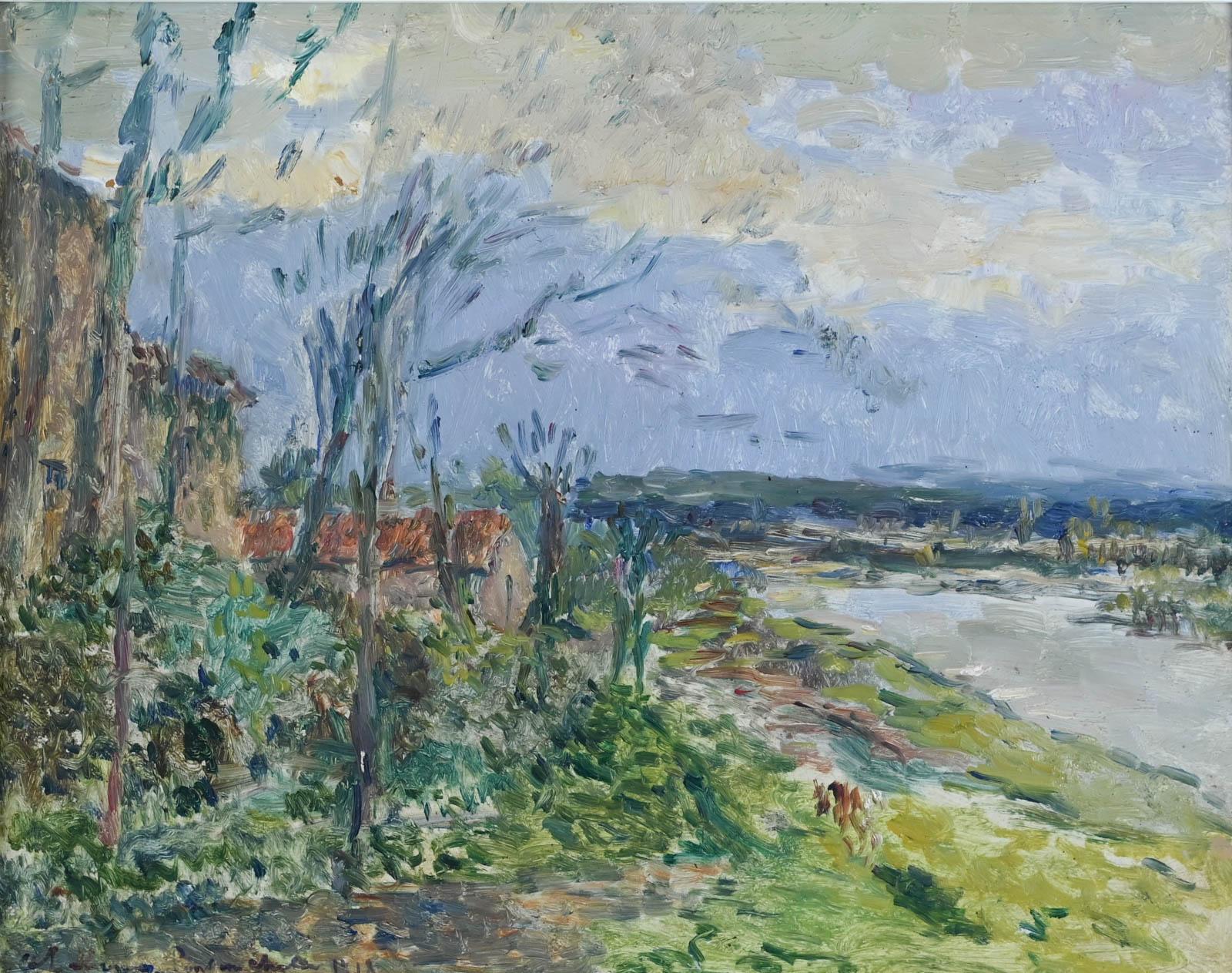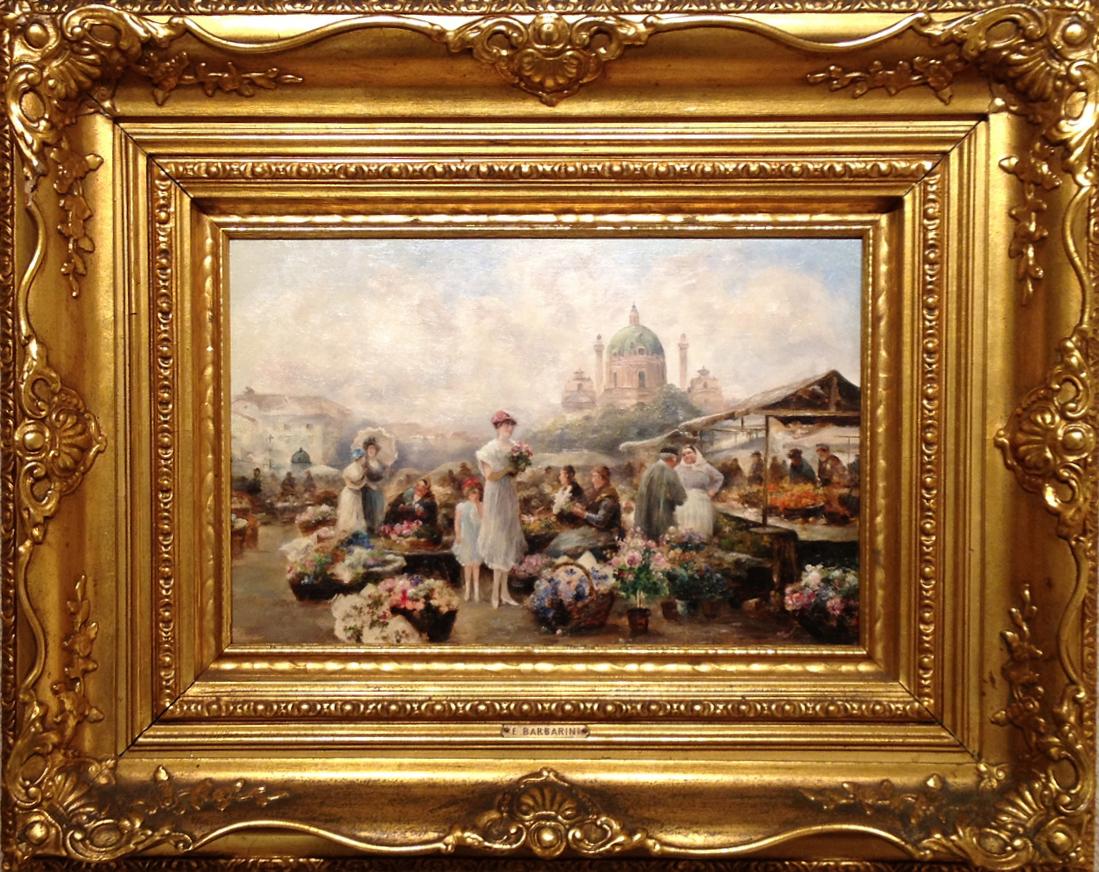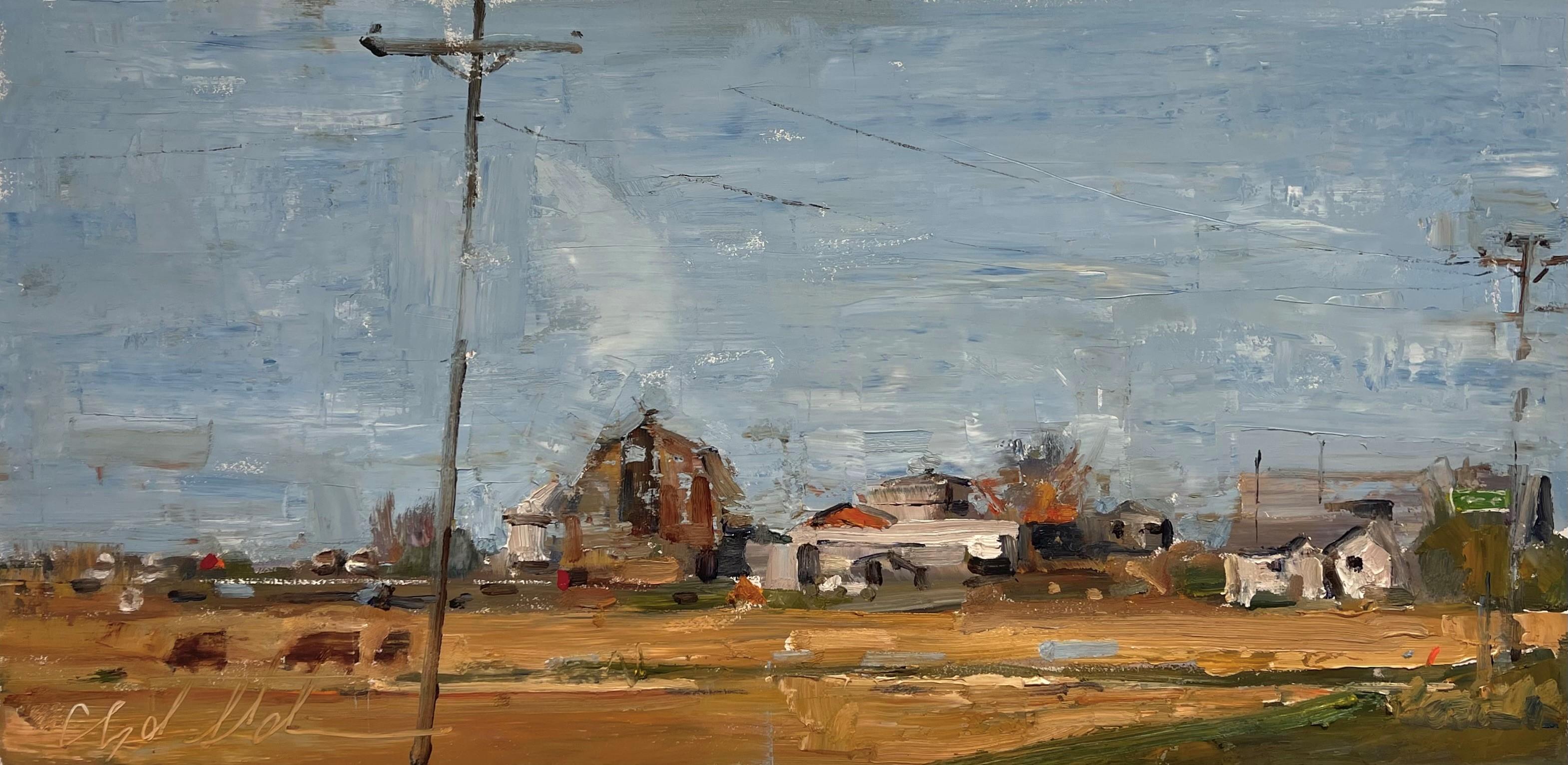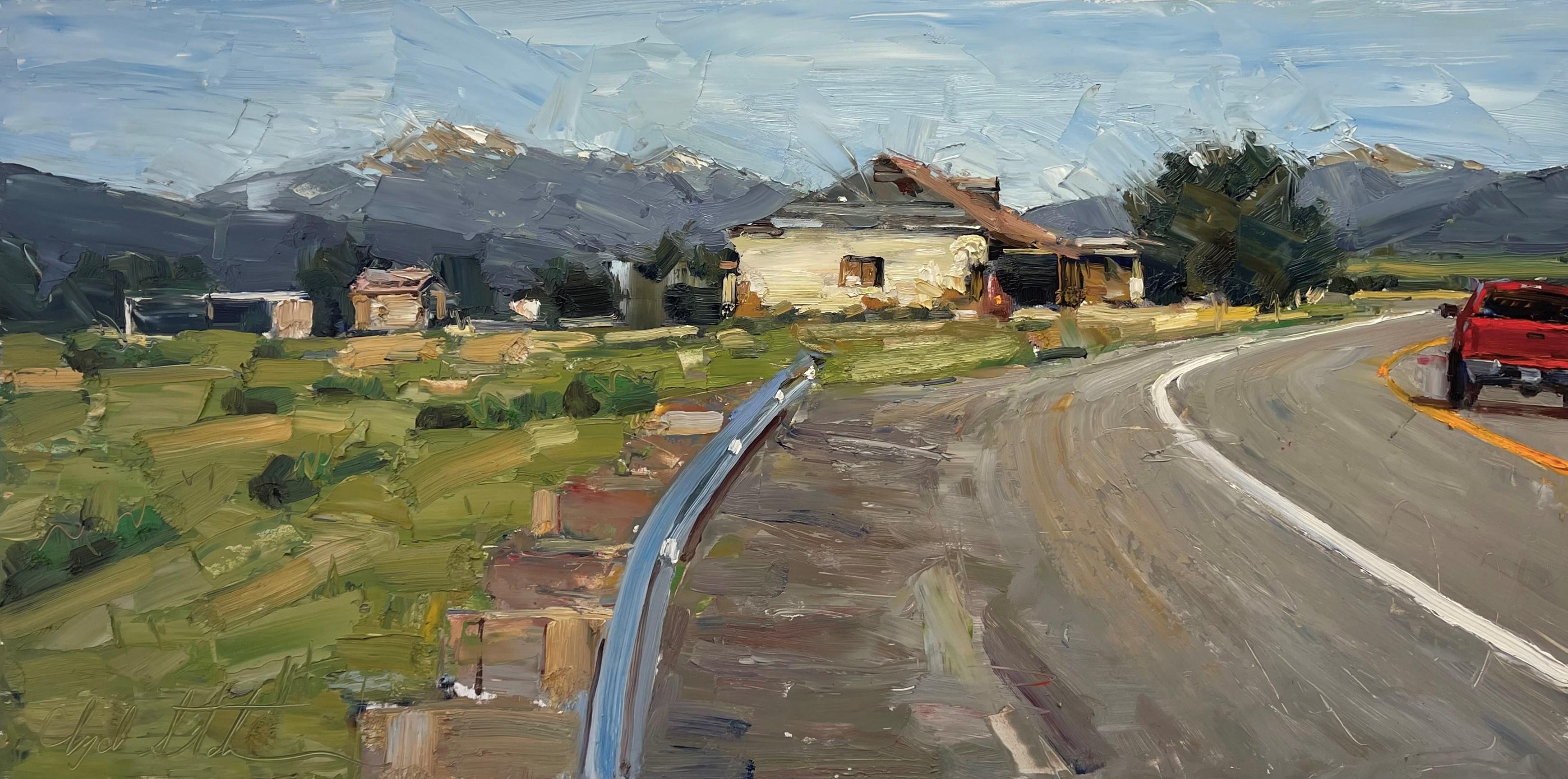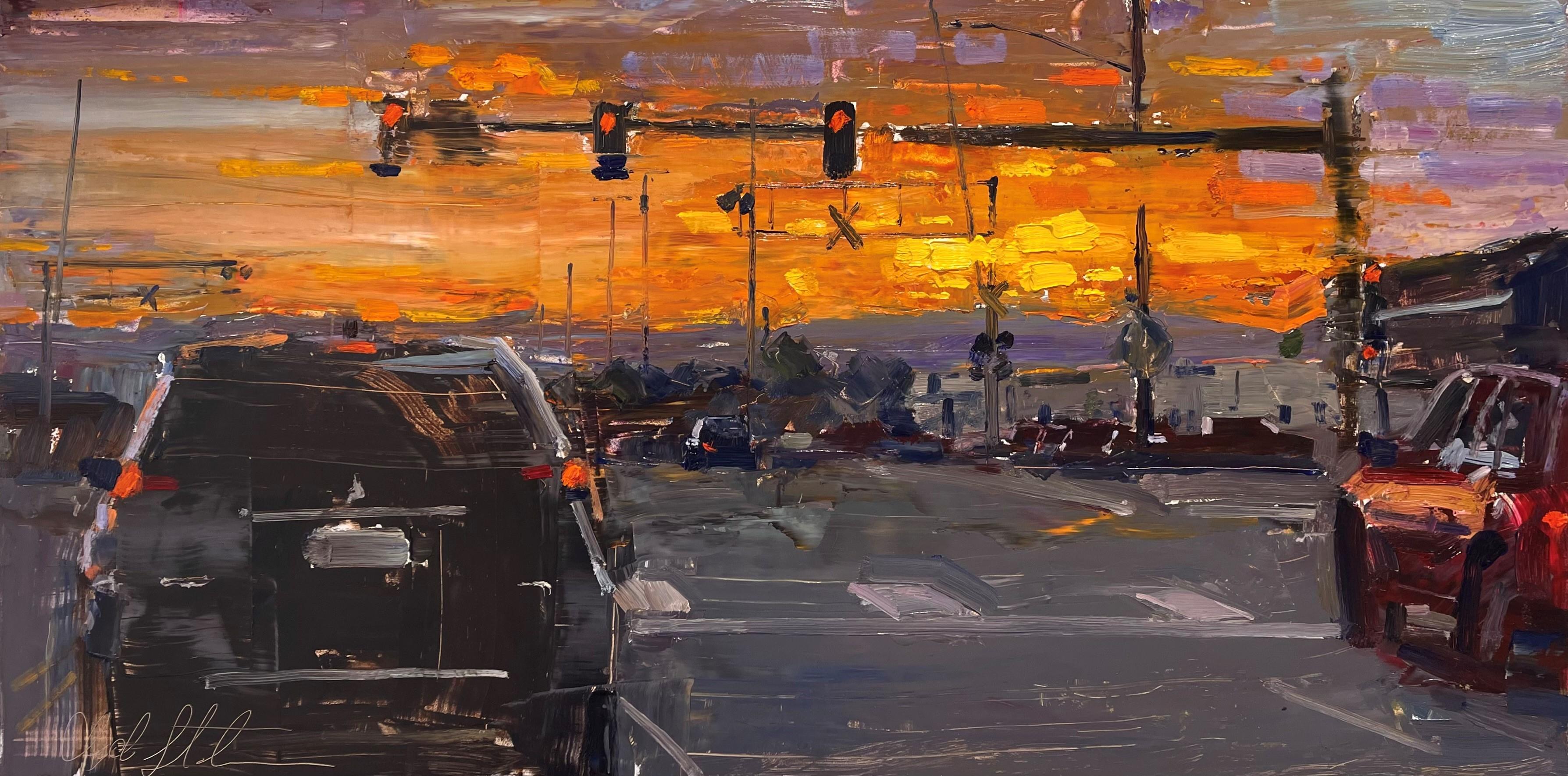Items Similar to L’embarquement by Gaston La Touche
Want more images or videos?
Request additional images or videos from the seller
1 of 9
Gaston La ToucheL’embarquement by Gaston La ToucheLate 19th Century
Late 19th Century
About the Item
Gaston La Touche
1854 - 1913 French
L’embarquement
The Embarkment
Signed "Gaston La Touche" (lower right)
Oil on panel
A fashionable group of merrymakers boards a rowboat at sundown in this oil on panel by renowned French painter Gaston La Touche. Softly lit and lushly detailed, the work represents the artist’s talent for capturing the gaiety of the Belle Époque. With its luminous coloring and feathery brushwork, this oil evokes the style and joie de vivre of the era rendered in La Touche’s distinctive, mature style.
Fresh and airy, the work is a beautiful example of the artist’s skill at capturing the subtle qualities of light and color. Set against the plein air backdrop of a wooded pond awash in the soft glow of the golden hour, the scene reflects the influence of the Impressionists. The subject also recalls works by Manet, Monet and Renoir, who delighted in depictions of modern leisure among the expanding middle class. The scene is an informal one, and its unconventional cropping suggests that the viewer is invited to take a seat in the boat and join the group on their outing. Such relaxed, inviting scenes were remarkably popular among contemporary, modern audiences. However, La Touche's style is singular, possessing an element of fantasy and romance that set him apart from the Impressionists.
Gaston La Touche was born in St. Cloud, outside of Paris, in 1854, and he showed a keen interest in art from a young age. At ten years old, he began taking private art instruction, which lasted until 1870, when his family was forced to flee to Normandy amid the Franco-Prussian War. This was the only formal art training La Touche would ever receive. Despite his lack of Academy training, he made his debut at the Paris Salon of 1875 with a sculptural medallion and etchings, and he exhibited his first painting at the Salon of 1881. Although he began his career painting dark-toned realist compositions, by 1890, his style had shifted to what would become his signature — a lighter, brighter, idealistic society world.
The artist was associated with practically all of the most influential artists and thinkers of late 19th century France, including Édouard Manet, Edgar Degas, Émile Zola, who frequently met at the legendary Cafe de la Nouvelle Athenes to share their thoughts on modern society. In 1900, he was named a Chevalier of the Legion d'Honneur and an Officer in 1909. Additionally, he was well-decorated at the grand exhibitions of the day, earning medals at the Salons of 1884 and 1888, a bronze medal at the 1889 Exposition Universelle and a gold medal at the 1900 Exposition Universelle, demonstrating his position as one of the most accomplished artists of the Belle Époque. Today, his works reside in prestigious institutions such as the British Museum (London) and the Walters Museum (Baltimore).
Late 19th century
Panel: 26 1/8” high x 31 1/2” wide
Frame: 34" high x 39 1/8" wide
- Creator:Gaston La Touche (1854-1913, French)
- Creation Year:Late 19th Century
- Dimensions:Height: 34 in (86.36 cm)Width: 39.13 in (99.4 cm)Depth: 2.25 in (5.72 cm)
- Medium:
- Movement & Style:
- Period:
- Condition:
- Gallery Location:New Orleans, LA
- Reference Number:
About the Seller
5.0
Vetted Seller
These experienced sellers undergo a comprehensive evaluation by our team of in-house experts.
Established in 1912
1stDibs seller since 2013
14 sales on 1stDibs
Typical response time: 4 hours
- ShippingRetrieving quote...Ships From: New Orleans, LA
- Return PolicyThis item cannot be returned.
More From This SellerView All
- TaroudantLocated in New Orleans, LASigned, inscribed and dated "R. Pinatel / Taroudant / 1926" (lower right) Oil on panel A stunning ode to the Moroccan landscape, this oil on panel was composed by the French Orientalist painter Raphaël Pinatel, whose lively works adeptly translated the romanticism of the East for a Western audience. The present work, which captures a market in Taroudant, a city in southeastern Morocco, exemplifies the artist’s distinctive approach as he brilliantly translates the energy and atmosphere of the desert city. Pinatel’s style is impressionistic in his brushwork and handling of light and atmosphere. In the present work, he brilliantly captures the effects of the direct desert sun...Category
Early 20th Century Impressionist Landscape Paintings
MaterialsPanel, Oil
- Dans le parc en automne, Paris (In the Park in Autumn, Paris)By Jean Francois RaffaëlliLocated in New Orleans, LAThis thoroughly modern Parisian scene was composed by the celebrated French painter Jean François Raffaëlli. The delicate oil captures a familiar subject from late 19th-century life in the city: a busy avenue at the edge of a park on a cool autumn day. Exploring the climate of the city, Raffaëlli's mature works capture the energy of the grand parks and boulevards of the new Paris that emerged at the turn of the century. His legacy documents the realities of urban life during his age, all chronicled in his distinctive brushwork and sophisticated palette. While Raffaëlli was never fully accepted as a member of the Impressionist group, his works display a similar affinity for capturing the transient moments of modern life. His figures exude a sense of being suspended in time, as though they are part of some subtle narrative that is both restless and harmonious. Perhaps more aligned with Naturalism than Impressionism, the visual effect of Raffaëlli's composition is one of carefully composed spontaneity that makes manifest the joie de vivre of the age. Raffaëlli was not the only artist of his era to devote his canvases to the urban landscape. Camille Pissarro, Claude Monet, Gustave Caillebotte and others composed significant works on the subject of the urban milieu. On the whole, it was an entirely new kind of painting, and it was largely influenced by the work of social engineer Baron Haussmann beginning in the 1850s. At the request of Emperor Napoleon III, Haussmann designed and carried out a large-scale urban renewal program, erecting landmarks and tree-lined thoroughfares throughout the city to create a unified and socially-centered urban aesthetic. The city became a glittering stage for modern advancements and bourgeois pleasure, which paved the way for a new kind of subject that was eagerly adopted by the Impressionists and artistic avant-garde. Born in Paris in 1850, Raffaëlli first studied theater and music before turning to painting in 1870. That same year, he submitted a landscape painting to the Salon and was accepted. Aside from just three months studying with the Academic great Jean-Léon Gérôme, Raffaëlli was self-trained, developing his own unique style that brought together Realism, Naturalism and Impressionism. While he managed to exhibit works at both the Salon and the Impressionist exhibitions...Category
Late 19th Century Impressionist Landscape Paintings
MaterialsBoard, Oil
- La Terrasse Devant La Mer By Jean Pierre CassigneulLocated in New Orleans, LAJean-Pierre Cassigneul b.1935 French La terrasse devant la mer (The Terrace by the Sea) Signed “Cassigneul” (lower left) Oil on canvas laid on panel This monumental, three-panele...Category
20th Century Post-Impressionist Figurative Paintings
MaterialsCanvas, Oil, Panel
- Moses and the Pillar of Cloud by Lucas Cranach the Elder and StudioBy Lucas Cranach the ElderLocated in New Orleans, LALucas Cranach the Elder and Studio 1472-1553 German Moses and the Pillar of Cloud Oil on panel Moses and the Pillar of Cloud is a bold and evocative composition that showcases the signature intense color and intricate detail of Lucas Cranach the Elder’s celebrated oeuvre. The remarkable 16th-century oil on panel by Lucas Cranach and his studio captures the narrative moment when Moses leads the Israelites out of Egypt and encounters God manifested through a large pillar of cloud. Moses stands at the precipice of a bridge and turns back to soldiers helping to lead the group of Israelites who huddle closely together. Cranach depicts Moses with his traditional iconography, rendering the rays of light on his head which came to be interpreted as "horns" in the translation of the Bible. Using his traditional walking staff, Moses gestures toward the pillar, seemingly acknowledging that God will protect the group as they cross the bridge to the other side, leaving exile and entering a promised land. In a nod to Cranach’s Germanic locale, he renders the figures and setting in a manner that feels decisively more akin to European aesthetics than those of the Red Sea. Soldiers wear elaborate, gothic suits of armor that recall the livery of Northern European guardsmen. The terrain appears more like a European forest giving way to a sweeping valley than the arid landscape the Israelites trekked through on their journey across the Red Sea. Though still clearly recounting a story from the Old Testament, Cranach renders the cast of characters and setting in an earthly, familiar manner. This aesthetic shift speaks to Cranach’s own changing beliefs as he found himself at the center of the Protestant Reformation. After first gaining recognition in 1505 as the official painter of Frederick the Wise, Cranach established a thriving painting and print studio in Wittenberg, Germany. Cranach was renowned for his court portraits and genre paintings and was also well known for his association with the famous protestant reformer Martin Luther, then under the protection of Frederick the Wise. As Wittenberg became a bastion of new religious thought, Cranach soon befriended Luther and played an active role in creating the printed materials that proliferated throughout the Reformation...Category
16th Century Old Masters Figurative Paintings
MaterialsOil, Panel
- Dance of the NymphsBy Paul Desire TrouillebertLocated in New Orleans, LAThis lyrical landscape entitled Dance of the Nymphs was composed by the French Barbizon painter Paul Désiré Trouillebert. A joyful scene of nymphs dancing the morning fog, the work closely resembles an important work by the great Camille Corot, which is now housed at the Musée d'Orsay (Paris). Renowned for his unique individuality that toed the line between the traditional and modern, Corot and his landscapes helped pave the way for an entire generation of Impressionists who followed him. Trouillebert perfectly captures the poetic atmosphere of Corot’s groundbreaking works, while also imbuing this scene with a freshness and character that is all his own. Trouillebert's oil on canvas is exemplary of the tradition of historical painting. The work perfectly combines a realistic depiction of the natural world with a spirited romanticism as his idealized nymph figures frolic playfully beneath a crisp morning sky. As a whole, it is a lovely composition executed with a level of skill and artistry that proves Trouillebert's exceptional talent in the arts. Born in Paris in 1831, Paul Désiré Trouillebert was a student of the academic painters Ernest Hébert...Category
19th Century Academic Landscape Paintings
MaterialsCanvas, Oil
- La Petite Swan By Ramon DilleyLocated in New Orleans, LARamon Dilley 1933 - Spanish La Petite Swan Signed “Dilley 91” (lower right) Signed and titled “Ramon Dilley / La Petite Swan” (en verso) Oil on board laid on canvas This captivat...Category
20th Century Post-Impressionist Figurative Paintings
MaterialsOil, Canvas, Board
You May Also Like
- Romantic French Shepherdess 19th Century Landscape Painting by Jean BeauduinBy Jean BeauduinLocated in Rochester, NYFrench shepherdess at twilight by Jean Beauduin (1851-1916). Oil on canvas mounted on board. Original Barbizon frame. I believe the dog is a bergere Pic...Category
19th Century Impressionist Landscape Paintings
MaterialsCanvas, Oil, Panel
- Pont du ChâteauBy Albert LebourgLocated in LE HAVRE, FRAlbert LEBOURG (1849-1928) Pont du Château, 1918 Oil on panel Size : 33 x 42 cm Signed and dated 1918 lower left. Origin : - Galerie Tuffier, Les Andelys, - Private collection, Pa...Category
1910s Impressionist Landscape Paintings
MaterialsOil, Panel
- Vienna Flower Market oil painting by Emil BarbariniLocated in Hudson, NYPainting measures 10 ½" x 16" and framed 20 ½" x 26" x 4"Category
1920s Impressionist Landscape Paintings
MaterialsPanel, Oil
- "Country Road" Oil PaintingLocated in Denver, COClyde Steadman's "Country Road" is an original, handmade oil painting that depicts an impasto painting of a pastoral setting.Category
2010s American Impressionist Figurative Paintings
MaterialsOil, Panel
- "Going Round the Bend" Oil PaintingLocated in Denver, COClyde Steadman's "Going Round the Bend" is an original, handmade oil painting that depicts an impasto painting of a two lane road going around the bend with mountains in the backgrou...Category
2010s American Impressionist Figurative Paintings
MaterialsOil, Panel
- "Impending Storm, " Oil paintingBy Sandra PrattLocated in Denver, COSandra Pratt's "Impending Storm" is an original handmade oil painting that depicts an impressionistic rendering of water and land meeting with chaotic grey clouds overhead. Artist Statement: My work is inspired by my emotional response to places I've seen and experienced. In particular, the contrasts of light and dark. I enjoy using a palette knife for the immediate bold statement it offers. I started painting as a young child and studied for a while at the School of the Art Institute of Chicago but ultimately decided to be a self-taught artist, My style of painting is called abstract impressionism. I work Alla Prima, wet into wet, not reworking a picture that has dried. I started using the palette knife to do color charts, then kept using it for immediate effects and fun texture. The challenge is making the whole painting cohesive enough in a single session, which can be a fun challenge working big!. I paint intuitively, and I enjoy painting landscapes best, scenes all people can relate to at a fundamental level, green fields in Ireland, Paris alleys, and little white barns. I'm drawn to old structures, falling down barns, fences, and houses. I love the sense of history, fragility, and secrets they exude. Artists I'm inspired by are Edward Seago, Kyffin Williams, Nicolai Fechin, and Sergei Bogart. These painters have a very particular style and handle of paint manipulation I find fascinating. My color palette has simplified over time. I've experimented with many colors; my basic palette is usually around seven colors plus white. I like creating color harmony, so the focus is on shape, composition, and edges, although colorful paintings have a place in my work. Overall, I intend to show my viewers simplicity in art and create transcendent experiences. My work has been exhibited at the Brattleboro Museum in Vermont, with the Allied Artists of America in NY, and at the A.R. Mitchell Museum and the Fort Collins Museum of Contemporary Art in Colorado. I'm from Chicago, IL, and currently live in the mountains of Colorado with my incredible husband, two kids, cattle dog...Category
2010s Impressionist Landscape Paintings
MaterialsOil, Panel, Linen

